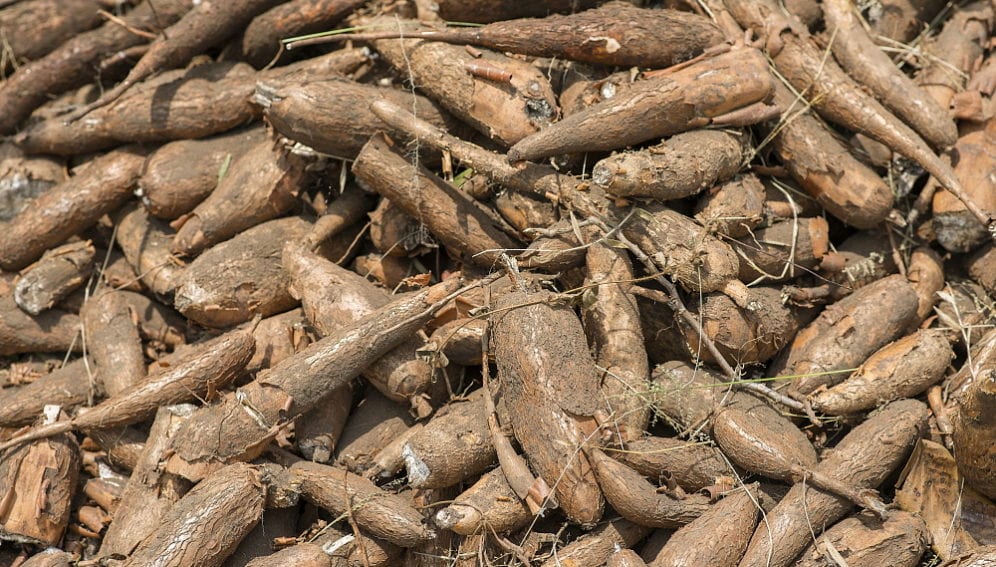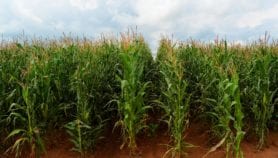By: Paul Adepoju
Send to a friend
The details you provide on this page will not be used to send unsolicited email, and will not be sold to a 3rd party. See privacy policy.
[IBADAN, NIGERIA] Breeding African cassava cultivars for improvements such as pest and disease resistance could impair their yield potential, a study suggests.
According to UN Food and Agriculture Organization, cassava is a major staple food for over one billion people in 105 countries. In Sub-Saharan Africa and other tropical and subtropical regions, cassava is the third largest source of calories.
 Source: Worldatlas.com
Source: Worldatlas.com
In a study published in the May issue of the journal Food and Energy Security, US-based researchers assessed the rates at which the cassava cultivars transform light energy and carbon dioxide into yield, a process known as photosynthesis.
Stephen P. Long, a co-author and a professor at the Departments of Plant Biology and Crop Sciences, University of Illinois at Urbana–Champaign in the United States, says that the process of photosynthesis in most crops is inefficient but bottlenecks can now be identified and addressed by modifying gene expression.
“What we are doing with photosynthesis is another way of increasing yield potential,” Long tells SciDev.Net.
The researchers selected four popular cultivars that Nigerian cassava farmers consider as high yielding. Two of the cultivars are African landraces that are improved cultivars bred by the International Institute of Tropical Agriculture (IITA) in Ibadan, Nigeria.
“We were able to calculate some parameters that are related to the efficiency of photosynthesis and water use for each cultivar.”
Amanda P. De Souza, The University of Illinois at Urbana‐Champaign
The plants were grown at a controlled greenhouse environment for 45 days at the University of Illinois at Urbana–Champaign, according to the study which was first published on 20 February.
The researchers evaluated rates of photosynthesis and other characteristics including leaf area and carbohydrate content in different organs of the plants.
“With these measurements, we were able to calculate some parameters that are related to the efficiency of photosynthesis and water use for each cultivar,” explains Amanda P. De Souza, a co-author of the study and a postdoctoral research associate at the University of Illinois at Urbana‐Champaign.
The researchers found that unimproved landraces are better at photosynthesising than their improved counterparts and that improved cultivars impaired photosynthesis by 20 per cent. The study also shows water use efficiency is 21 per cent higher in landraces than improved cultivars. De Souza says they will study elite cultivars that are resistant to pests and diseases, and will increase photosynthetic rates and WUE through bioengineering.
Long tells SciDev.Net that his outfit is undertaking similar studies on cowpea, soy bean and rice.
But Michael Adedigba, a researcher and member of the cassava breeding programme at IITA, says unimproved cultivars of cassava are usually tall, provides low yield and are highly susceptible to diseases and pests.
“These [characteristics] necessitated the development of improved cultivars, which have shorter life spans and better yield,” he tells SciDev.Net.
He adds that local farmers will always accept hybrid cassava varieties that give them more yields. But he agrees that photosynthesis conversion can be used to measure yield.
"The different cultivars … perform variably under different environmental conditions, which did not allow the plants to fully express their gestational period," Adedigba says.
But De Souza tells SciDev.Net that the full cycle of cassava is eight to 12 months.
“Here in Illinois, the weather doesn't permit us to grow cassava up to this stage in the field, and inside the greenhouse, the growth would be limited by the size of the pots,” explains De Souza.He notes that they had to analyse the young stages of the plants because of such factors. “However, in terms of photosynthesis at leaf level, we do not expect the rates changes during the plant’s [later] development.”
This piece was produced by SciDev.Net’s Sub-Saharan Africa English desk.














